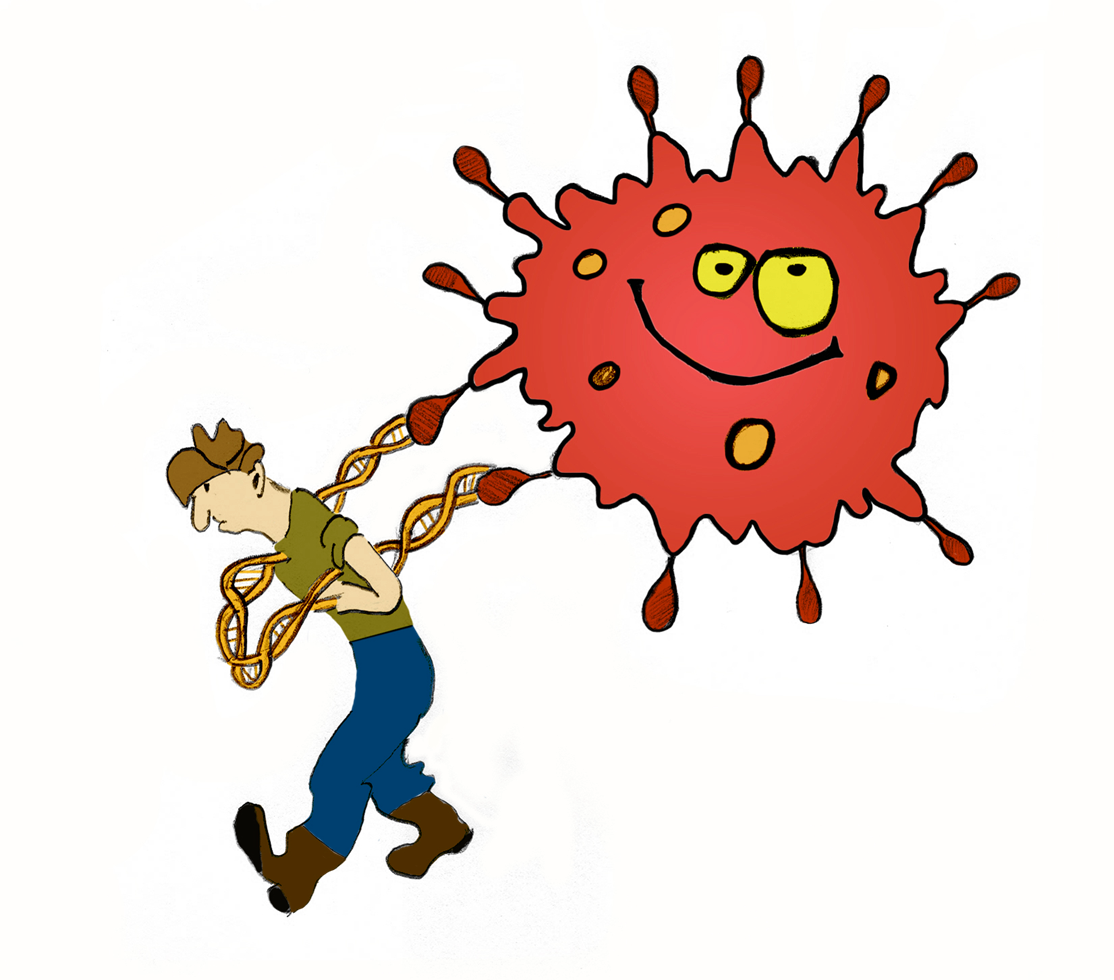

Oeiras, 14.10. 2015
Researchers from the Structural Virology Lab at ITQB, together with scientists from the EMBL-Hamburg, Institute of Molecular Medicine and Harvard Medical School, have identified regions on a viral protein that are critical for herpes virus LANA protein to bend DNA, simply by a pivot motion. The work funded by the Harvard Medical School-Portugal Program was recently published in Nucleic Acids Research. The research combined severall techniques including X-ray crystallography, ITC and BioSAXS.
http://nar.oxfordjournals.org/content/early/2015/09/30/nar.gkv987.abstract
Author Summary
Nucl. Acids Res. (2015) doi: 10.1093/nar/gkv987
Herpesviruses establish life-long latent infections. During latency, Kaposi's sarcoma-associated herpesvirus (KSHV), persist as multicopy, circularized genomes in the cell nucleus and express a small subset of viral genes. KSHV latency-associated nuclear antigen (kLANA) is the predominant gene expressed during latent infection and causes several malignancies in humans. C-terminal LANA binds KSHV terminal repeat (TR) DNA to mediate DNA replication. We show how the closely related KSHV and MHV-68 viruses have evolved differently to bind TR viral DNA. A pivot region is identified in kLANA, but not in MHV-68 LANA, which allows greater freedom in its oligomeric assembly to persist in a human host.
Viral protein takes a piggy-back on chromosomes

Oeiras, 18.11. 2013
Researchers from the Structural Genomics Lab at ITQB, together with scientists from Institute of Molecular Medicine and Harvard Medical School, have identified regions on a viral protein that are critical for herpes virus to lie dormant within our bodies, namely by literally tying the virus to our chromosomes. The work funded by the Harvard Medical School-Portugal Program was recently published in PLoS Pathogens.
Many viruses are able to lie dormant within the cell and remain under the radar of our immune system. This ability, called viral latency, enables the virus to reactivate and produce new progeny, in the absence of new external virus, and makes it extremely difficult to treat. The most common example is cold sores (caused by alpha-herpesvirus). Researchers at ITQB concentrated on a more pathogenic virus - the Kaposi's sarcoma-associated herpes virus - which many will trace back to Tom Hanks’ character in the movie Philadelphia. While they can remain harmless, many members of this virus family (gamma-herpesviruses) are strongly associated with tumours.
Latency requires that the viral DNA is maintained through cycles of cell division in the host cell, so researchers concentrated on showing how viral DNA is connected to our chromosomes. By determining the X-Ray 3D structure of a viral protein calledLatency Associated Nuclear Protein (LANA), researchers identified a novel surface feature critical for viral latent infection. “Only through solving the structure were we able to discover the two faces of LANA” says Colin McVey, the lead author, “one face binding the viral DNA and the other face linking to the host chromosome”.
Studying human virus is often difficult because of their inability to infect other animals in the same way. With no good animal models it is very hard to test new assumptions on the disease. But for the Kaposi's sarcoma-associated herpesvirus, researchers had at their disposal a mouse version of the virus that acts much in the same way, with the advantage of having a simpler form of the LANA protein. In this work, it was possible to manipulate the LANA protein and see how virus latency was affected: mutations that prevented DNA binding lead to the loss of virus latency. Since LANA can perturb many cellular pathways that contribute to the formation of tumours, future work will now focus on the human virus protein as a potential drug target.
> Read also the article in Público
PLos Pathogens Oct 17, 2013 DOI: 10.1371/journal.ppat.1003673
Bruno Correia, Sofia A. Cerqueira, Chantal Beauchemin, Marta Pires de Miranda, Shijun Li, Rajesh Ponnusamy, Lénia Rodrigues, Thomas R. Schneider, Maria A. Carrondo, Kenneth M. Kaye, J. Pedro Simas, Colin E. McVey
Author Summary
Herpesviruses establish life-long latent infections. During latency, gammaherpesviruses, such as Kaposi's sarcoma-associated herpesvirus (KSHV), persist as multicopy, circularized genomes in the cell nucleus and express a small subset of viral genes. KSHV latency-associated nuclear antigen (LANA) is the predominant gene expressed during latent infection. C-terminal LANA binds KSHV terminal repeat (TR) DNA to mediate DNA replication. TR DNA binding also allows tethering of the viral genome to mitotic chromosomes to mediate DNA segregation to daughter nuclei. We describe here the crystal structure of the murine gammaherpesvirus 68 LANA DNA binding domain, which is homologous to that of KSHV LANA. The structure revealed a dimer and we identified residues involved in the interaction with viral DNA. Mutation of these residues abolished DNA binding and viable latency establishment in a mouse model of infection. We also identified a positively charged patch on the dimer surface opposite to the DNA binding region and found this patch exerts an important role in the virus's ability to expand latent infection in vivo. This work elucidates the structure of the LANA DNA binding domain and identifies a novel surface feature that is critical for viral latent infection, likely by acting through a host cell protein.
We have one guest and no members online